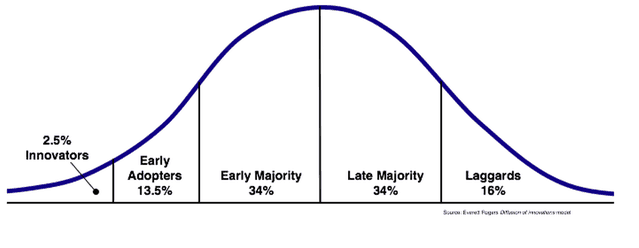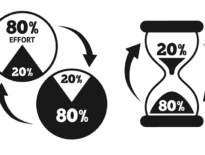“We launched a new website,” he exclaimed. “No longer are we living in the past, now we are here!” Eh, I’ve heard better from speakers, but I’ve certainly heard worse.
We were sitting in the Palm Court Ballroom at the Mayflower Hotel in Washington DC. The tall ceilings, the chandeliers, it was beautiful.

“It’s important to recognize that artificial intelligence is here, and we need to know how to harness it.” I was squirming in my seat. “Marc Benioff, the CEO of Salesforce is in Davos today, and earlier he said that AI is the future of our economy. As fundraising professionals we need to keep that in mind!”
As Mark Geiger, President and CEO of AFP continued through his presentation I couldn’t help but fixate on those statements…
Is AI really ‘here’? I asked myself. What about a sound annual giving program and a donor welcome series? Shouldn’t we implement that before we start worrying about ‘AI’? Wait, what even is AI?
His presentation continued, I noshed on snacks (you know the ones you get at conferences, they always look better than they actually are), and enjoyed the company of dozens of fundraising professionals around me. I was attending the bi-annual forum for the Association of Philanthropic Counsel, a niche membership group of esteemed fundraising consultants.

Unlike the Nonprofit Technology Conference, or AFP International, the APC Winter Forum wasn’t sprawling and encompassing an entire hotel or convention center. No, no, instead, our 50 or so guests could easily breakout into conversation and discussion amongst one another. It’s really a pleasant “conference” experience — more productive and engaging than those massive events other organizations put on.
During these two days of nonstop learning and professional development we had three speakers, Mr. Geiger from AFP being one of them, preach to us the importance of artificial intelligence or machine learning. It was during the second presentation that I realized we are about to enter an AI bubble.
Artificial intelligence in fundraising
“I don’t see it, I really, really don’t.” I said to the woman sitting next to me. “If you look at for-profit peers, they aren’t even leveraging AI effectively. Hasn’t there been an innovation gap of many years between burgeoning for-profit best practices and nonprofit implementation?”
She poured more water into her glass, “Trust me, Zach, I think all this AI, machine learning, and chatbot stuff is worthless. Why don’t we focus our efforts on just getting a planned giving program in place first?”
It was then that I realized I wasn’t alone.
As Mr. Geiger, and then Adam Treiser of Arjuna Solutions discussed “AI” (which I have purposefully put in quotes, because depending on who you talk to, it has a different definition), I couldn’t help but take pause. A survey of business executives (not nonprofit executives, these are for-profit business executives), showed that their depth of knowledge on AI is limited.
As someone who is a business executive, has programming knowledge, and has helped design software, I too struggle to understand the details of AI, especially when it is used in so many different contexts throughout conversation. I also lack an understanding of how the technology could truly benefit our sector right now.
If business leaders are foggy on what artificial intelligence really is, I think it’s safe to say that most nonprofit professionals feel this way too.
For years I have been helping nonprofit professionals leverage their data more effectively. The whole premise of Fundraising Report Card is to assist a nonprofit pro in making sense out of their data. Do people like Mr. Geiger or Mr. Treiser really think that most organizations are capable (or should) go light years beyond that relatively simple (but challenging and rewarding) analysis into the world of AI? I don’t get it.
If you’re keeping score at home, I still have yet to tell you exactly what artificial intelligence is, and if you’re anything like me, you don’t really have a concrete clue. A 2018 paper published by The Brookings Institution defines artificial intelligence as systems that contain three characteristics: intentionality, intelligence, and adaptability. What does this mean? It means the computer can make decisions that would normally require human intelligence.
You tell me, is that what’s really holding back nonprofits from growth — their lack of machines to make decisions in place of their staff?
As we think about innovation and the rate at which organizations adopt new practices, it’s safe to suggest that nonprofits are traditionally not early adopters. Some might say the average nonprofit is even a laggard when it comes to implementing whiz-bang technology. Why then did I listen to multiple presentations that prescribe ‘AI’ as the thing to focus on in 2019? Because it’s “buzzy,” it’s “sexy,” and it’s (this is the best part!), “ambiguous.”

Drop the phrase, “you really need to be thinking about artificial intelligence” in a sentence, and most folks in a room will be impressed. What do 99.9% of nonprofits need to worry about however? Not artificial intelligence. Discuss the need for a donor welcome series and you’ll get some nods of heads. Bring up planned giving, and half the room will lose interest in your presentation. Artificial intelligence is flashy, it’s catchy, and it’s about to be the biggest bubble we’ve experienced since, well, chatbots. Okay, okay, maybe there are a lot of whiz-bang products out there that come and go, but from the presentations I heard, AI seems to be here to stay, and you should protect yourself from being sucked into thinking it’s a necessity right now.
One of the major takeaways I had from Mr. Geiger is that he is following the shiny object … artificial intelligence isn’t all that it’s cracked up to be, at least not yet, and in the meantime, as the leader of the largest association for fundraising professionals, we need a focus on the “not sexy,” realities of development. Relationship building, stewarding legacy gifts, and respectful donor communications come top of mind.
Yes, MarketSmart, the company I help oversee is working its way towards leveraging artificial intelligence, but that’s years down the line. Will there be applications of this technology? Certainly. Will those applications be worthy of your limited time, budget, and other resources? Probably not, at least not today. Let’s be sure to continue this conversation in 2020 or 2021, maybe then it will be feasible.
As you continue to go into the office day after day, it’s paramount you focus on the 80/20. What activities and investments will yield the greatest lift? I ask myself this question multiple times throughout the day. It’s the backbone of my decision making process.
Let this be a warning when you hear peers suggest “we really need to leverage AI.” The time will come when computers, and robots replace all of us, but until then, please think about your planned and major giving programs.





I agree that we tend to go after the next shiny object, and the minute something with a nifty name like “AI” comes out, we all leap on it like it’s a magic bullet. We did it with screening products; we did it with relationship mapping; and we did it with analytics (and I represent an analytics firm). However, AI, like the other trends I just mentioned, has a role: It fits into a program where every prospect is cultivated either electronically or personally, and gift officers and other solicitors gain the head space to focus on the right relationships that need to be cultivated right now.
If you read some of the marketing articles on the customer journey, you can see how a nonprofit can leverage AI on its web page to engage a constituent more deeply. AI can also be used to trigger events based on analytics — for example, a message can pop up in my gift officer’s in box about her best prospect when AI recognizes that she exhibited a behavior that indicates a deeper investment in our organization.
So, I hear your concerns in your article — there’s no magic bullet no matter how much we pretend that we just need to buy something, it all does boil down to doing the hard work. And your articles inspire my work, Zach.
Marianne,
Thank you so much for taking the time to read this piece! I greatly appreciate your kind words.
I entirely agree with everything you have written, especially behavior based triggers and notifications. However (and this may be my lack of understanding what “AI” really is), aren’t those accomplished without AI? For example, at MarketSmart, we actually do what you describe, we track individual donor behavior across a variety of online platforms and alert gift officers of who they should be engaging with based off of patterns we identify. With that being said, we don’t leverage AI. A human being (or, in our case a team of them) designed and determined what activities should trigger an alert to a gift officer. If AI was in place, it would decide what those triggers or patterns should be.
This is my qualm with the entire artificial intelligence discussion. The tactic (engaging the right donor at the right time) is the same (and worthy!), but the execution is different (machine determined alerts vs. human determined alerts). Today, I don’t see the computer getting any better results than our team. But, I’ve been known to be wrong before (ask my family, friends, or coworkers), and in this case I’d like to be proven wrong. Our team actually has on our product roadmap the addition of AI to enhance results. I just don’t see it changing the landscape today, tomorrow, or even this year. For now, I see AI as a buzzword that sales people, thought leaders, and others will throw around without too much discretion, and that makes me queasy.
Thanks for this article and perspective Zach. It’s a good conversation to be having, though probably not a top priority for most nonprofits in 2019. Full confession: I’ve never been a first adopter. I was slow to jump on most bandwagons as they rolled out. I saw little need for email at first. Same thing for web-enabled search. Same thing for social media. Then, inexorably, these things all became needs; things no one can live without.
Maybe that will happen with AI. Probably, in fact. We all need to adapt in order to keep pace. And… we need to make sure we also stick with tried-and-true personal fundraising strategies that work like gangbusters. One doesn’t necessarily substitute for another. The extent to which nonprofits of all shapes and sizes will ultimately be required to embrace AI remains to be seen. Will I be recommending it as a priority for this year or next? Nope.
Claire, thank you for taking the time to read this! I agree entirely with you when it comes to “getting on the bandwagon.” In our sector in particular, it seems that most organizations would benefit from focusing on the “basics,” before jumping onto the next best thing. To each their own.
Thanks for your commentary which provides helpful food for thought. I am of two minds about AI:
1. It could prove a marvelous tool to help small-shops to more efficiently focus on people who might become major gift, campaign, or planned giving donors. It might even help suggest which donors are not worth retaining (because in reality not all donor are ultimately desirous of being retained).
2. AI is limited in its ability to make judgments and does not and will not replace the ability of one human to look another in the eye, come to understand their life story and motivations for giving, then have discussions about a gift that will bring joy to that human as well as the nonprofit. You don’t need to believe me, in a segment about AI that aired on 60 minutes several weeks ago this very topic was discussed and a person being interviewed spoke about the fact that AI is not able to ascertain motivations.
We have tools, tons of tools. I would agree that we tend at times to turn to the tool box rather than engaging in the most effective activity, which is connecting directly with donors. In fact, I think we sometimes use our need to use the tools and maintain them as an excuse for not getting out the door. That said tools can help us be more efficient and provide that out-the-door time.